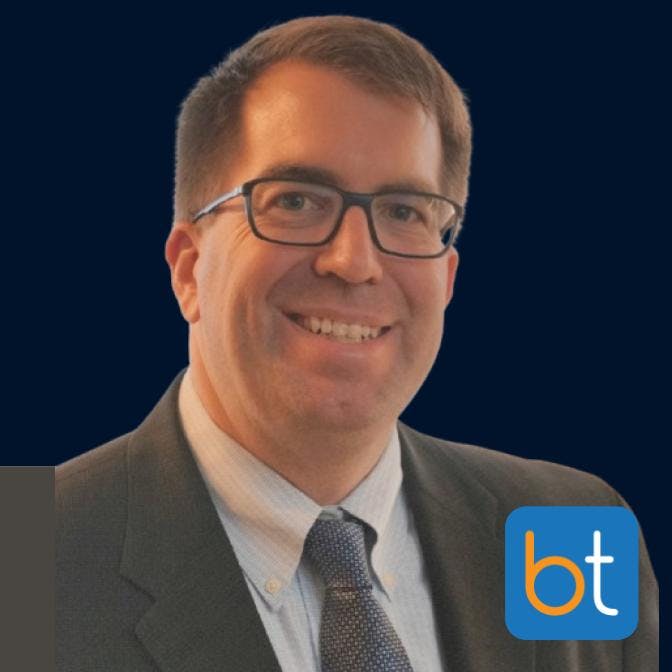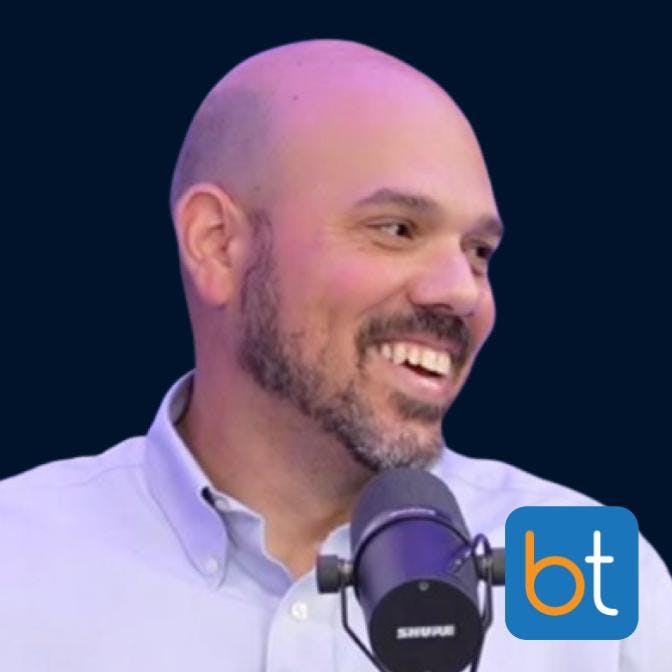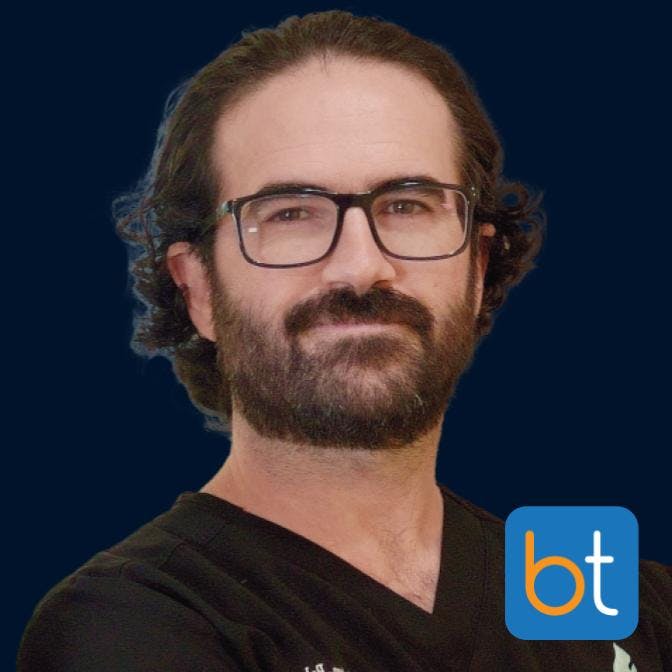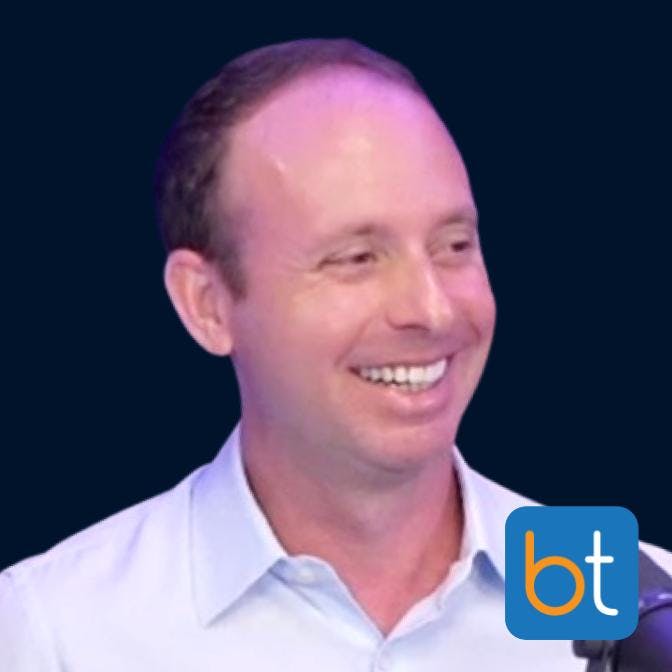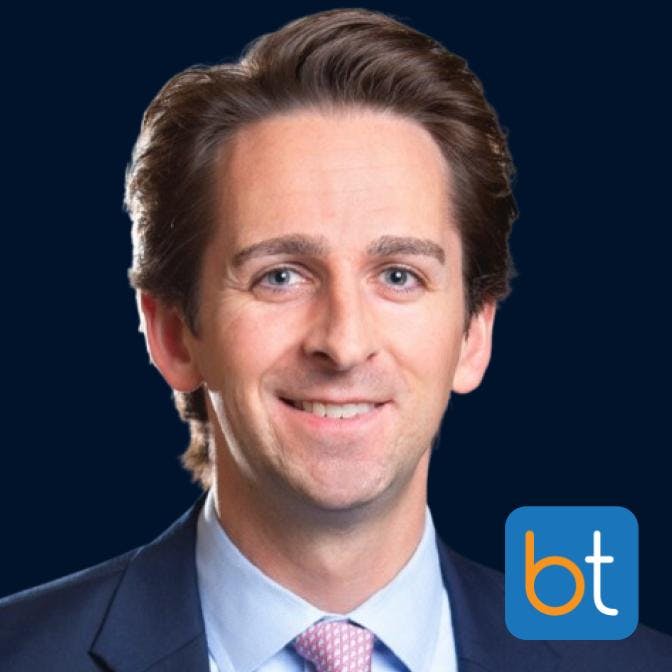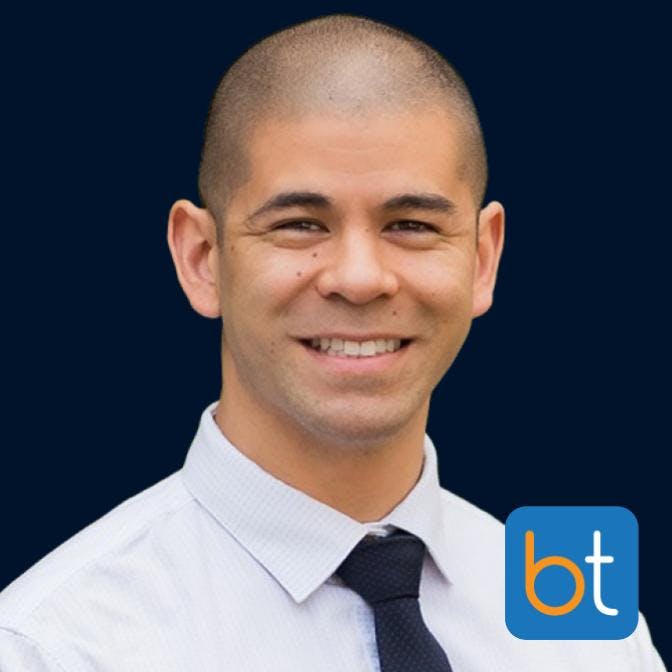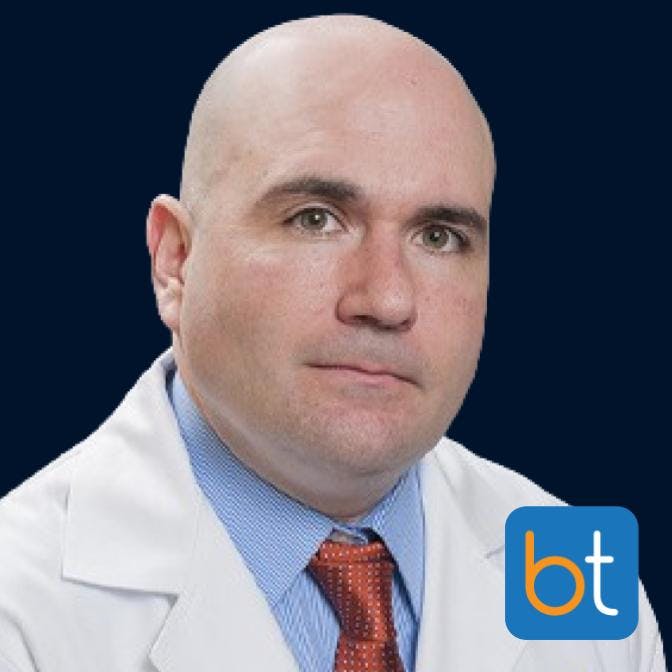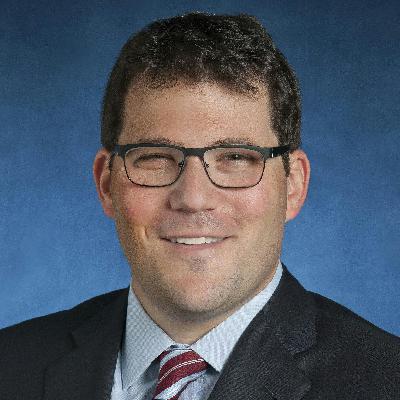Discover BackTable Vascular & Interventional
BackTable Vascular & Interventional

BackTable Vascular & Interventional
Author: BackTable
Subscribed: 112Played: 6,263Subscribe
Share
© All rights reserved
Description
The BackTable Podcast is a resource for interventional radiologists, vascular surgeons, interventional cardiologists, and other interventional and endovascular specialists to learn tips, techniques, and the ins and outs of the devices in their cabinets. Listen on BackTable.com or on the streaming platform of your choice. You can also visit www.BackTable.com to browse our open access, physician-catered knowledge center for all things vascular and interventional; now featuring practice tools, procedure walkthroughs, and expert guidance on more than 40 endovascular procedures.
605 Episodes
Reverse
With the range of interventional modalities that are available for metastatic liver tumors, when should you advocate for thermal ablation at the tumor board? In this episode of BackTable, host Dr. Sabeen Dhand welcomes back Dr. Jason Hoffman, an interventional radiologist from New York University, to discuss tools, techniques, and multidisciplinary collaboration around microwave ablation for liver metastases.
---
This podcast is supported by:
Varian
https://www.varian.com/products/interventional-solutions/microwave-ablation-solutions
---
SYNPOSIS
The physicians discuss the decision-making process behind using microwave ablation for metastatic liver disease, and strategies for advocating for the technology in tumor boards. Dr. Hoffman especially emphasizes the value of educating patients about their options and using thoughtful clinical judgement as an IR. The discussion delves into the benefits and advancements in microwave ablation, including his experience with the Varian system in light of NeuWave’s discontinuation. Dr. Hoffman shares the utility of software guidance, system fusion with CT machines, temperature monitoring, and the ability to achieve a more spherical ablation zone.
---
TIMESTAMPS
00:00 - Introduction04:39 - Practice Growth11:10 - Microwave Ablation Technology12:43 - Multidisciplinary Approach to Liver Metastases26:48 - Microwave Technology and Probe Placement28:42 - Guidance Software and Technological Integration30:40 - Planning and Intraoperative Decisions40:28 - Future of Microwave Ablation48:35 - Conclusion and Final Thoughts
When cancer spreads to the brain, what is the best approach: immediate local treatment or systemic immunotherapy first? Part two of the 2025 NSCLC Creator Weekend™ series focuses on a complex case involving a 75-year-old woman with a history of breast malignancy, presenting with new dyspnea and a large mass in the left lower lobe.
---
This podcast is supported by an educational grant from Johnson & Johnson and Varian.
---
SYNPOSIS
Our mock tumor board consists of surgeons, medical oncologists, and radiation oncologists to deliberate and determine the best treatment plan. The specialists explore diagnostic and treatment options, including neoadjuvant chemoimmunotherapy, invasive mediastinal staging, and the potential for surgical resection or radiation therapy.
---
TIMESTAMPS
00:00 - Introduction05:01 - Approach to Isolated Brain Metastasis09:09 - Radiation Therapy Considerations12:06 - Imaging and Follow-Up Strategies14:39 - Resectability and Surgical Decisions19:10 - Conclusion
---
RESOURCES
PACIFIC Clinical Trialhttps://www.nejm.org/doi/full/10.1056/NEJMoa1709937
When conventional revascularization fails, can deep venous arterialization offer a new lifeline to limb salvage? Dr. Lucas Ferrer Cardona, vascular surgeon at Ascension and Dr. Miguel Montero Baker, vascular surgeon and medical director at HOPE Clinical Innovation Center join host Dr. Sabeen Dhand for an insightful discussion on deep venous arterialization (DVA).
---
This podcast is supported by:
RADPAD® Radiation Protectionhttps://www.radpad.com/
---
SYNPOSIS
The doctors discuss the progression of deep venous arterialization, highlighting the benefits of open, endovascular, and hybrid approaches. They draw on their personal experiences to share key technical nuances and explore new devices such as the Aveera Boomerang device. They emphasize the critical role of patient selection, family support, and close postoperative surveillance, including weekly wound assessments and monthly ultrasound evaluations. Although currently FDA-approved for no-option chronic limb-threatening ischemia (CLTI), Dr. Baker notes that deep venous arterialization may hold promise even for patients earlier in the disease course.The episode concludes by exploring future directions for deep venous arterialization, highlighting the ongoing need for research to advance limb preservation.
---
TIMESTAMPS
00:00 - Introduction03:15 - The Inspiration Behind Their Podcast10:05 - Challenges and Success Stories in Vascular Surgery10:29 - Exploring Deep Venous Arterialization (DVA)25:16 - Hybrid Approaches and Patient Outcomes32:06 - Evolution of Endovascular Techniques37:33 - Patient Selection and Criteria38:52 - Understanding the Biology of Procedures43:57 - Exploring New Techniques and Devices58:52 - Challenges and Considerations01:01:51 - Final Thoughts
---
RESOURCES
Hybrid superficial venous arterialization and endovascular deep venous arterializationhttps://pubmed.ncbi.nlm.nih.gov/37404577/ Transcatheter Arterialization of Deep Veins in Chronic Limb-Threatening Ischemiahttps://www.nejm.org/doi/full/10.1056/NEJMoa2212754
As lung cancer treatments become more complex, is a collaborative tumor board more essential than ever? We’re kicking off the 2025 NSCLC Creator Weekend™ series with an in-studio panel discussion on the multidisciplinary management of lung cancer. The panel includes experts from medical oncology, thoracic surgery, radiation oncology, and interventional pulmonology from major institutions in Los Angeles.
---
This podcast is supported by an educational grant from Johnson & Johnson and Varian.
---
SYNPOSIS
They discuss the operation of tumor boards at their respective institutions, the impact of virtual meetings, optimal strategies for mediastinal staging, the management of early-stage lung cancer, and the emerging role of ablation therapy. The conversation dives into the complexities of treating patients with recurrence or metastatic disease, highlighting the importance of collaborative decision-making in navigating these challenging scenarios. The episode emphasizes the critical role of multidisciplinary tumor boards in providing informed, patient-centered care.
---
TIMESTAMPS
00:00 - Introduction06:59 - Role of Pulmonologists in Tumor Boards12:08 - Importance of Tissue Diagnosis24:52 - Lung Cancer Screening and Stigma34:01 - Interventional Radiology and Biopsies46:21 - Challenges with Immunotherapy and Radiation53:44 - The Importance of Multidisciplinary Teams54:24 - Final Thoughts
---
RESOURCES
American Lung Association 2024 Datahttps://www.lung.org/getmedia/12020193-7fb3-46b8-8d78-0e5d9cd8f93c/SOLC-2024.pdf
National Lung Screening Trialhttps://www.nejm.org/doi/full/10.1056/NEJMoa1102873
Checkmate 816https://www.nejm.org/doi/full/10.1056/NEJMoa2202170
PACIFIC Trialhttps://www.nejm.org/doi/full/10.1056/NEJMoa1709937
As breast imaging is becoming increasingly sensitive, is cryoablation the next frontier for treating small cancers or patients who are poor surgical candidates? Learn from expert Dr. Robert Ward, associate professor and program director of the Breast Imaging Fellowship at Brown University as he provides a contemporary overview of the innovative field of breast cryoablation.
---
SYNPOSIS
Dr. Ward shares his journey to becoming an expert in breast cryoablation, from his start in residency to his well-developed service line today. He details his experience enrolling patients in the FROST Trial, which is investigating the role of breast cryoablation as an alternative for surgery in patients with early stage invasive breast cancer.
The conversation also covers the intricacies of the procedure, patient selection criteria, pre- and post-procedural care, and the significance of receptor positivity and clinical markers in treatment choices. Dr. Ward talks through the challenges in needle positioning prior to ice ball formation and the possibility of treating tumors close to the skin surface given appropriate wound care. The discussion concludes with a future look at how cryoablation could change the current paradigm of breast cancer care.
---
TIMESTAMPS
00:00 - Introduction 01:39 - The Rise of Breast Cryoablation06:40 - Challenges and Considerations in Cryoablation07:59 - Patient Referral and Evaluation Process13:35 - Equipment and Techniques for Cryoablation23:29 - Procedure Steps and Needle Positioning26:11 - Post-Procedure Thawing and Patient Expectations28:35 - Post-Procedure Care and Follow-Up34:20 - Future of Cryoablation in Breast Cancer Treatment38:01 - Conclusion
---
RESOURCES
FROST Trialhttps://clinicaltrials.gov/study/NCT01992250
Brown et al., Strategies to Optimize Success in Breast Cancer Cryoablation, Journal of Vascular and Interventional Radiologyhttps://pubmed.ncbi.nlm.nih.gov/41083146/
What role does thyroid artery embolization play in contemporary thyroid cancer care? Dr. Juan Camacho, an interventional radiologist from Sarasota, Florida, joins host Dr. Sabeen Dhand to discuss how this emerging technique is reshaping the management of thyroid malignancies.
---
SYNPOSIS
Dr. Camacho shares his experiences establishing a multidisciplinary team at Memorial Sloan Kettering Cancer Center dedicated to the management of thyroid malignancies, highlighting the critical role of collaboration in the successful implementation of this emerging treatment. He details key procedural techniques, emphasizing the importance of recognizing anatomic variations that can influence technical success. He also examines how arterial supply and lesion location inform procedural planning and decision-making, and outlines his technical approach to thyroid artery embolization, including the use of a radial artery access, catheter selection strategies, and the application of cone-beam CT for procedural optimization. Finally, he reviews his pre- and post-procedural management strategies, including the role of beta blockers in optimizing patient outcomes.
The discussion concludes with illustrative case studies demonstrating substantial reductions in thyroid volume and symptomatic relief, notably achieved without post-procedural hypothyroidism.
---
TIMESTAMPS
00:00 - Introduction03:31 - Pioneering Thyroid Ablation at Sloan Kettering06:53 - The Need for Thyroid Artery Embolization25:08 - Pre-Procedural Planning32:41 - Embolization Technique and Procedure44:48 - Choosing the Right Catheter for the Job45:43 - Ensuring Patient Comfort and Safety47:09 - High-Stakes Imaging and Safety Protocols47:55 - Innovative Techniques and Case Studies51:02 - Post-Procedure Management and Follow-Up56:30 - Engaging with Endocrinology and Surgeons01:00:00 - Case Studies and Practical Applications
A patient presents to the ER with hemoptysis. When is bronchial artery embolization (BAE) the right call, and what can you do to tip the odds of procedural success in your favor? In this episode of the BackTable Podcast, interventional radiologist Dr. Alexander Lam of UCSF shares his approach to bronchial artery embolization with host Dr. Ally Baheti.---This podcast is supported by:RADPAD® Radiation Protectionhttps://www.radpad.com/---SYNPOSISThe conversation covers why patients are referred for this procedure, the typical causes of bronchial artery hypertrophy, and Dr. Lam's preferred techniques for embolization, including the use of glue over traditional particles. Dr. Lam emphasizes the importance of multidisciplinary collaboration, detailed pre-procedure preparations, and recognizing potential complications.---TIMESTAMPS00:00 - Introduction01:45 - Patient Evaluation04:22 - Causes of Bronchial Hypertrophy09:03 - Procedure Setup10:35 - Catheter Selection and Techniques13:35 - Embolic Choices and Techniques19:39 - Understanding Different Types of Glue22:48 - Continuous Push Technique24:38 - Managing Complications and Success Rates28:14 - Postoperative Instructions and Follow-Up29:00 - Handling Difficult Bronchial Artery Selections34:02 - Final Thoughts
With the annual trend of fluctuating reimbursement rates, have you been on the fence about turning your OBL into an ASC? Make sure your OBL is prepared for the surprising changes in coding coming in 2026. In this episode, Dr. Mary Costantino partners with fellow OBL owner Dr. Goke Akinwande and revenue cycle management expert Laurie Bouzarelos to review the new CPT code changes and how they translate to OBL and ASC reimbursement.---SYNPOSISDr. Akinwande discusses many positive takeaways after diving into the recent Medicare documents, and highlights key shifts. He believes these changes to add-on codes and territories means one thing: CLI is being heard. The upcoming code changes improve delineation of vascular territories, differentiating between "simple" (stenosis) and "complex" (CTO) procedures. These changes are aimed at rewarding physicians performing the difficult CLI work while decreasing reimbursement for more straightforward cases.Beyond the CPT code specifics, the conversation also covers real-world implications for OBL owners. Dr. Akinwande explains why these changes might narrow the reimbursement gap between OBLs and ASCs, prompting him to warn against ASC conversion. Laurie Bouzarelos provides guidance on implementation, stressing the importance of updating charge masters, reviewing payer contracts for "gap fill" clauses, and monitoring payments once the new codes go live. The episode ends with a discussion on obstacles in billing, collections, and the need for physicians to master the business side of their practice to ensure financial success.---TIMESTAMPS00:00 - Introduction04:37 - 2026 CPT Changes Overview07:18 - Simple vs. Complex Codes13:16 - Key Add-on Codes19:52 - OBL vs. ASC Conversion?24:56 - IVL Reimbursement Trends29:18 - Update Your Charge Master41:41 - Pricing & Medicare Year46:39 - Billing & Collections Reality
Is meningeal artery embolization the key to ending the cycle of chronic subdural hematomas? In this episode of the Back Table Podcast, Dr. Paul Gullota from Ochsner Health joins host Michael Barraza to share his technical insights on middle meningeal artery embolization, including patient workup, procedure technique, and post-operative care.---SYNPOSISThe episode begins with a discussion on the evolving role of middle meningeal artery embolization in preventing chronic subdural recurrence. The doctors talk through patient selection and procedural planning for middle meningeal artery embolization, emphasizing the importance of assessing collateral pathways and hemorrhage laterality. Dr. Gullota shares his access techniques, microcatheter and embolic options, and the critical role of teamwork with neurosurgery. He also shares his approach to navigating complex vascular anatomy as well as ensuring appropriate patient follow up.---TIMESTAMPS00:00 - Introduction03:12 - Middle Meningeal Artery Embolization: Rationale and Process04:17 - Patient Evaluation and Procedure Steps06:09 - Outpatient Procedures and Billing07:06 - Candidates for Embolization Post-Evacuation07:56 - Unilateral vs. Bilateral Embolization10:34 - Procedure Techniques and Tools19:48 - Post-Procedure Care and Follow-Up21:35 - Final Thoughts and Conclusion
From longitudinal monitoring to complex interventions, type II endoleaks often require an individualized approach. In this episode of BackTable, host Dr. Sabeen Dhand welcomes Dr. Matt Givens, Chief of Interventional Radiology at the New Orleans VA and faculty at Louisiana State University Health, to discuss the intricacies of type II endoleak management and repair techniques.---SYNPOSISThe conversation begins with a walkthrough of Dr. Givens’s firstline operative approach, which involves entering the inferior mesenteric artery and choosing a microcatheter that allows for entry into the sac and nidus. The doctors cover nuances in choosing and planning transarterial, translumbar, and transcaval approaches. Dr. Givens also details his embolics of choice, his preferred tools for direct sac puncture, and the rationale behind his embolization endpoints.---TIMESTAMPS00:00 - Introduction 08:12 - Imaging and Follow-Up Protocols16:27 - Transarterial Techniques for Endoleak Management33:45 - Techniques for Targeting and Embolization35:34 - Challenges and Solutions in Embolization36:57 - Transcaval and Translumbar Approaches39:09 - Complications and Case Studies53:58 - Building a Collaborative Practice56:09 - Conclusion
PERT Consortium 2025 gives interventionalists the reins to tackle even the toughest saddle pulmonary embolisms. In this episode of the BackTable Podcast, host Dr. Aaron Fritts welcomes interventional radiologist Dr. Osman Ahmed and interventional cardiologist Dr. Jonathan Paul to discuss their experiences at the annual PERT Consortium in San Diego, and offer their perspectives on the latest developments in pulmonary embolism (PE) treatment.---SYNPOSISThe doctors delve into advancements and trials within the PE treatment space, including new devices and clinical studies that are set to shape the future of pulmonary embolism care. The conversation highlights the value of collaboration between interventional specialties, the safety and efficacy of various PE interventions, and the growing trend of using combined therapies. They also provide updates on their ongoing innovation with Flow Medical, describing their philosophy and motivation for developing a new device for PE treatment that incorporates real-time pulmonary artery pressures, mean systolic and diastolic pressures, and a potential for AI utilization in the future. ---TIMESTAMPS00:00 - Introduction01:23 - PERT Consortium Highlights02:11 - Emerging Clinical Trials and Innovations03:59 - Thrombectomy Devices and Market Trends12:37 - Flow Medical: Origin and Updates19:37 - Advanced Data Tracking in Cardiology20:45 - Remote Monitoring and Mobile Integration22:45 - Cardiologists’ Data-Driven Approach23:10 - Upcoming Studies and Data Insights24:10 - Interventional Radiology and Cardiology Collaboration25:07 - Access to Care and Procedure Adoption27:32 - Final Thoughts---RESOURCESPulmonary Embolism Response Team (PERT) Consortiumhttps://pertconsortium.org/ Flow Medicalhttps://www.flowmedical.co/ PEERLESS RCThttps://www.ahajournals.org/doi/10.1161/CIRCULATIONAHA.124.072364RESCUE-IIhttps://www.jacc.org/doi/10.1016/j.jacadv.2025.101789 PEERLESS II https://www.jscai.org/article/S2772-9303(24)01053-6/fulltextPulmonary Embolism - Thrombus Removal With Catheter-Directed Therapy (PE-TRACT)https://clinicaltrials.gov/study/NCT05591118 The HI-PEITHO Studyhttps://www.bostonscientific.com/en-EU/medical-specialties/vascular-surgery/venous-thromboembolism-portal/pulmonary-embolism/clinical-data/hi-peitho.htmlPRAGUE-26https://eurointervention.pcronline.com/article/design-and-rationale-of-prague-26-a-multicentre-randomised-trial-of-catheter-directed-thrombolysis-for-intermediate-high-risk-acute-pulmonary-embolism Pulmonary Embolism - Thrombus Removal With Catheter-Directed Therapy (PE-TRACT)https://clinicaltrials.gov/study/NCT05591118 Aaron Fritts, MDhttps://www.backtable.com/shows/vi/contributors/dr-aaron-fritts Osman Ahmed, MDhttps://jointvascular.com/team/osman-ahmed-m-d-fcirse/ Jonathan Paul, MDhttps://www.uchicagomedicine.org/find-a-physician/physician/jonathan-d-paul
From the angio suite to the boardroom, what qualities of an interventional radiologist translate into pioneering leadership? Tune in to hear from Dr. Howard Chrisman, the President and CEO of Northwestern Medicine, as he discusses his journey with hosts Dr. Sabeen Dhand and Dr. Aaron Fritts.---SYNPOSISDr. Chrisman shares his inspiring journey from a student with an initial interest in veterinary medicine to a leader in interventional radiology (IR) and healthcare administration. He recounts his pivotal experiences, including his mentorship under prominent IRs, his decision to pursue an MBA, and the importance of building trust and fostering relationships within clinical and administrative realms. He details his learnings in developing self-awareness, being open to multiple viewpoints, and amplifying your voice as an IR. The discussion touches on the future of interventional radiology, the impact of artificial intelligence on the field, and the essential qualities for leadership in healthcare. Dr. Chrisman also reflects on the significance of learning from mistakes and the role of mentorship in his career, emphasizing the value of collaboration and empathy in achieving success.---TIMESTAMPS00:00 - Introduction 03:21 - Mentorship and Career Development09:55 - Balancing Bias and Decision Making18:32 - Building Trust and Value in Healthcare23:13 - The Future of Radiology and AI Integration28:48 - The Role of MBAs in Healthcare32:24 - Reflections on Leadership and Career35:43 - Conclusion and Final Thoughts
When a patient presents with portal vein thrombosis (PVT), how do you decide between anticoagulation, intervention, and adjunct therapies? In this episode, Dr. Vijay Ramalingam, vascular and interventional radiologist from Beth Israel Deaconess Medical Center, joins Backtable host Dr. Chris Beck to share his approach to evaluation and management of both acute and chronic PVT.---SYNPOSISThe discussion begins with an overview of the Splanchnic Vein Thrombosis Multidisciplinary Clinic at Beth Israel– a collaboration between Interventional Radiology, Hepatology/Gastroenterology, Surgery and Hematology. Dr. Ramalingam details the clinic's workflow, from initial case conference to the comprehensive single-day patient workup that includes imaging, lab work, and consultations with all three specialties. He shares his algorithm for treatment decisions, breaking down the distinct management pathways for patients with and without cirrhosis, and for those with acute vs. chronic thrombosis.Finally, Dr. Ramalingam details his portal vein recanalization technique during procedure, providing a step-by-step guide to his preferred dual-access approach for complex cases, including his method for trans-splenic access and his trick on how to safely close the splenic tract. He also explains when it’s appropriate to use adjunctive therapies like suction thrombectomy and catheter-directed lysis, and describes preliminary data showing that their comprehensive approach leads to a change in management for about 40% of patients.---TIMESTAMPS00:00 - Introduction05:35 - Splanchnic Vein Thrombosis Multidisciplinary Clinic22:24 - Multidisciplinary Approach26:17 - PVT Classification38:47 - Treatment Evaluation and Intervention44:21 - Alternative Treatment Options for PVT49:00 - Procedural Techniques59:53 - Adjunct Techniques and Case Studies01:02:58 - Review of Preliminary Data & Final Thoughts
This week’s episode is a masterclass on vascular anomaly treatment. Brush up on your malformations with Dr. Cliff Weiss, the Director of the Vascular Anomaly Center at Johns Hopkins. He shares next-level techniques, precision diagnostics, and his 'gold standard' approach to alcohol sclerotherapy.
---
This podcast is supported by:RADPAD® Radiation Protectionhttps://www.radpad.com/
---
SYNPOSIS
The episode begins with the most vital component of patient care: establishing a correct diagnosis through proper classification. Dr. Weiss shares his philosophy that “MRI is a conversation” - not just an image, detailing the specific MRI protocols to confidently make a diagnosis over 90% of the time. He then shares an overview of the classification system, differentiating vascular tumors like hemangiomas from high-flow and low-flow vascular malformations.
Dr. Weiss explores a wide array of treatment strategies tailored to each diagnosis. He walks through his techniques for treating low-flow malformations with sclerotherapy—using agents like alcohol, doxycycline, and bleomycin based on a lesion’s location and characteristics—and his use of cryoablation for vascular tumors. He then dives into the creative and high-stakes approaches for treating AVMs, comparing transvenous and transarterial embolization with agents like Onyx and coils, before concluding with his predictions on the future of IR in the field.
---
TIMESTAMPS
00:00 - Introduction 02:36 - Vascular Anomaly Center at Johns Hopkins06:33 - Vascular Anomaly & Malformation Diagnosis with Imaging09:04 - Classifying Vascular Anomalies15:55 - Vascular Tumors18:46 - Low-Flow Malformations27:58 - Needle Placement29:56 - Retro-orbital & ENT Malformations32:44 - AVM Treatment Strategy40:41 - Following up with Patients
What happens when the doctor suddenly becomes the patient? In this episode of the BackTable podcast, host Dr. Ally Baheti interviews Dr. Nicholas Hanson, an interventional and diagnostic radiologist from Oregon, about a life-changing event that dramatically altered his career.---SYNPOSISDr. Hanson describes the circumstances surrounding a severe car accident that resulted in a traumatic brain injury and subsequent medical complications, including the discovery of a heart aneurysm. He shares the challenges of his recovery, his struggle with insurance companies, and the emotional and professional toll of his experiences. Dr. Hanson provides valuable insights into the importance of disability insurance and the often overwhelming process of navigating healthcare systems. The discussion also touches on the ongoing debate about the separation of interventional radiology from diagnostic radiology and how sudden life events can impact one's career in medicine.---TIMESTAMPS00:00 - Introduction01:19 - The Life-Changing Event09:28 - Navigating Insurance and Disability16:39 - The Future of IR and Career Advice21:50 - Struggles with Disconnection28:56 - The Road to Recovery35:20 - Reflecting on the Journey37:42 - Closing Thoughts and Future Hopes
Is microwave ablation only for simple liver tumors, or can it be a versatile ‘Swiss Army knife’ for a wide range of complex cases? In this episode, Dr. Driss Raissi of the University of Kentucky returns to BackTable to join host Dr. Chris Beck for a deep dive into advanced and unconventional microwave ablation techniques. They cover strategies for tackling a wide range of cases, from desmoid tumors to enterocutaneous fistulas.---This podcast is supported by:Medtronic Emprinthttps://www.medtronic.com/emprint---SYNPOSISDr. Raissi shares his ‘pre-burn’ technique that desiccates tissue and reduces complications like capsular burst and bleeding. He elaborates on his method for tackling large liver tumors with a single probe through overlapping ablations, needle placement techniques and his ‘lung seal technique’ to prevent pneumothorax. Dr. Raissi also shares how his previous experience in the ICU promotes close communication with anesthesiologists and how he ups his ablation game through collaboration, optimizing conditions for safe and effective ablation.The episode explores a series of unique, real-world applications beyond the usual scope of IRs. Dr. Raissi walks us through his novel approach to challenging cases, including cauterization of enterocutaneous fistulas, endometriomas and desmoid tumors. He also compares using microwave or cryoablation for renal cell carcinoma, explaining thought processes based on lesion location and the need for speed and simplicity. The discussion provides an overview of ablation physics and careful techniques that expand treatment possibilities for IR patients.---TIMESTAMPS00:00 - Introduction 04:08 - Advanced Techniques for Liver Tumor Ablation06:06 - Pre-Burning Ablation and Ablating a Range of Lesions16:38 - Lung Ablation22:00 - Partnering with Anesthesia28:53 - Managing Postoperative Pain and Nerve Injuries29:42 - Treating Enterocutaneous Fistulas, Endometriomas & Desmoid Tumors38:49 - Adrenal Gland Ablation: A Case Study44:50 - Microwave vs. Cryoablation for Renal Cell Carcinoma49:06 - Preventing Pneumothorax in Lung Ablation
So you’ve placed the biliary drain—are your patients getting the follow up that they need? In this episode, Dr. Ahsun Riaz from Northwestern University joins host, Dr. Christopher Beck, for a deep dive into biliary strictures—how to manage them effectively and navigate the potential complications of this challenging chronic condition.---This podcast is supported by:Medtronic Emprinthttps://www.medtronic.com/emprint---SYNPOSISDr. Riaz takes us inside his journey of building a specialized hepatobiliary service at Northwestern, highlighting innovative practices like endoscopic techniques and radiofrequency ablation. He unpacks the nuances of distinguishing benign from malignant strictures, shares technical pearls for patient management, and emphasizes the power of collaboration with Gastroenterology to improve long-term patient outcomes. He outlines key technical considerations, including the use of the Hudson loop and strategic equipment selection to address intra-procedural challenges. He further emphasizes the importance of comprehensive patient care—ensuring appropriate follow-up, minimizing drain duration, and prioritizing quality of life as essential components of optimal management.---TIMESTAMPS00:00 - Introduction01:28 - Biliary Drain Management04:18 - Approach to Biliary Strictures19:20 - Endoscopic Evaluation and Techniques27:53 - Practical Tips and Experiences with Endoscopy30:39 - Post-Procedure Follow-Up and Patient Outcomes31:16 - Learning from the Hudson Roof Technique32:48 - Innovations in Benign Stricture Management36:48 - Endobiliary Ablation: Equipment and Procedure40:23 - The Double Dragon Technique Explained46:02 - Considerations for Malignant Biliary Stenting52:37 - Future Innovations and Collaborative Care
Could hospital employment be your path to practicing 100% interventional radiology (IR)? In this episode of BackTable, host Dr. Ally Baheti sits down with Dr. Ryan Trojan, an interventional radiologist at INTEGRIS Health in Oklahoma City, to discuss the pros and cons of hospital employment contracts in IR.---This podcast is supported by:Medtronic Emprinthttps://www.medtronic.com/emprint---SYNPOSISThe physicians take a deep dive into the evolving employment models in the IR landscape. Dr. Trojan shares his journey from a private IR-DR blended practice to becoming directly employed by a hospital, highlighting the financial challenges, contract negotiations, and administrative dynamics along the way. He explains the growing loss of IR talent to lucrative diagnostic contracts and emphasizes the importance of advocating for IR’s value to hospital systems, from decreasing length of stay to supporting ECMO, trauma, and transplant services. The discussion covers financial security, administrative support, and the benefits of having aligned goals with the hospital in order to grow an IR practice. Dr. Trojan also addresses common misconceptions about IR and private practice, detailing how the landscape is likely to change over the coming years, and offers advice on navigating employment contracts. ---TIMESTAMPS00:00 - Introduction03:02 - Transition to Hospital Employment12:15 - Advocating for IR’s Value16:07 - Contract Structures and Compensation Models25:07 - Benefits and Downsides of the Employed Model28:27 - Negotiating Contracts and Fair Market Value41:12 - Conclusion---RESOURCESDr. Trojan’s contact information:ryan.trojan@integrishealth.org
Should MRI-guided interventions be on your radar? Find out why the future of interventional radiology might lie in MRI guidance with experts Dr. Clifford Weiss from Johns Hopkins University and Dr. David Woodrum from the Mayo Clinic.---This podcast is supported by:Medtronic Emprinthttps://www.medtronic.com/emprint---SYNPOSISThe physicians join host Dr. Chris Beck to explore the benefits of MRI guided procedures, including superior imaging capabilities and reduced radiation exposure. Dr. Weiss and Dr. Woodrum detail the challenges and barriers to adoption, like the intricate set up needed to protect equipment from a strong magnetic field. They highlight the significant technological advancements and collaborations between MRI and device companies that are set to make MRI guided interventions more accessible and practical for everyday use. They also discuss the reimbursement paradigm for MRI guided biopsies and how similar the algorithm is to CT guided procedures.The episode closes with unique insights for young physicians on training opportunities and the promising future of MRI guided interventions for trainees looking to bring a different approach to their future practices.---TIMESTAMPS00:00 - Introduction05:13 - The Advantages of MRI in Interventional Radiology13:44 - Technical Insights and Challenges of MRI Guided Procedures18:46 - Future Prospects and Industry Developments in MRI Guided Interventions31:01- Development of Hybrid MRI Rooms48:19 - Economic Considerations and Reimbursement52:33 - Community Support for MRI Interventions56:41 - Conclusion and Final Thoughts---RESOURCESInternational Society for Magnetic Resonance in Imaging:https://www.ismrm.org/
What tricks do you have up your sleeve to help you get through tough cases? In this special episode of the BackTable Podcast, Drs. Ally Baheti, Mike Barraza, and Chris Beck spotlight the most creative and practical pearls from the 2025 BackTable Tips & Tricks competition, showcasing standout submissions and clever techniques shared by their peers.
---
SYNPOSIS
Guests include leading interventional radiologists like Dr. Aaron Fischman from Mount Sinai, who reveals his unique wire-shaping method—bending it like a question mark to navigate challenging, angulated vessels during prostate artery embolization. From Jefferson, Dr. Sean Maratto walks us through his innovative retrograde approach to placing double J stents. And from Ochsner Health, Dr. Tyler Sandow brings invaluable guidance on achieving direct portal vein access for TIPS.
---
TIMESTAMPS
00:00 - Introduction 03:30 - Favorite Tips and Tricks06:11 - Practical Techniques and Personal Experiences15:41 - A Humbling Experience with Phil Banov16:02 - The Bumper Stitch Technique17:55 - Direct Portal Access for TIPS19:35 - Navigating Challenging Cases24:11 - Radial vs. Femoral Access Debate27:33 - Innovative Techniques and Tricks29:36 - Final Thoughts and Gratitude




